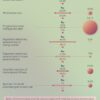A new discovery could soon be raising the total number of confirmed magnetars to 25.
On 3 June, a brief X-ray burst close to the galactic plane caught the attention of the Swift Burst Alert Telescope (BAT). Follow-up observation and analysis seem to confirm that it was emitted by a previously unknown magnetar, now named Swift J1555.2-5402.
Given how few magnetars we have identified within the Milky Way, any new addition has the potential to vastly increase our understanding of these mysterious objects.
Magnetars have been something of a cosmic celebrity lately. They’re a very rare type of neutron star, which are the collapsed cores of stars that started out with masses between 8 and 30 times that of the Sun.
When these stars go supernova and blow off their outer material, their cores collapse down into some of the densest objects in the Universe – up to about twice the Sun’s mass, packed into a sphere just 20 kilometers (12 miles) across.
Magnetars are all this, and more. As the name suggests, they have an insanely powerful magnetic field – around 1,000 times more powerful than a normal neutron star’s, and a quadrillion times more powerful than Earth’s.
These stars are difficult to detect, which makes them challenging to understand. Just 24 magnetars have been confirmed to date, with another six candidates in the wings. This means there’s a whole lot we don’t know about them, such as how they grew such nutso magnetic fields.
A recent discovery catapulted magnetars into the spotlight: one of these mysterious stars was caught spitting out a type of powerful radio signal called a fast radio burst that had previously only been detected from sources outside the Milky Way, and whose provenance was unknown.
It makes sense – magnetars are turbulent beasts. As gravity tries to keep the star together – an inward force – the magnetic field is so powerful, it exerts an outward force, distorting the star’s shape. This leads to an ongoing tension between the two forces, which occasionally produces gargantuan starquakes and giant magnetar flares.
Swift J1555.2-5402 revealed its presence with a burst of X-radiation. Follow-up observations were then conducted using NASA’s Neutron star Interior Composition Explorer (NICER) telescope and Swift’s X-ray Telescope, both space instruments in Earth orbit.
Swift identified a new X-ray source at the coordinates of the burst, and NICER detected coherent pulsations characteristic of a magnetar – “which confirms that the short burst was indeed emitted by a new magnetar,” according to a follow-up posted to Astronomers Telegram.
A full analysis is, of course, pending, and we’ll be looking forward to learning more about this newly discovered object, and if it can tell us anything new about magnetars in general.



